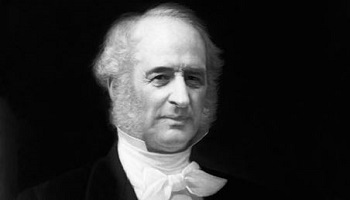
Cornelius Vanderbilt Net Worth The Rise of America Railroad Tycoon
Cornelius Vanderbilt, also known as “Commodore,” is a name that resonates with the industrial revolution in America. He was one of the most influential figures of the 19th century, having built an empire that revolutionized transportation and infrastructure. His legacy as a railroad tycoon is unparalleled, and his net worth, at its peak, was astronomical, influencing the trajectory of both the American economy and the transportation industry. This blog post will explore Cornelius Vanderbilt’s journey from humble beginnings to becoming one of the wealthiest men in America, and how his net worth shaped the future of the United States.
Early Life and Humble Beginnings
Cornelius Vanderbilt was born on May 27, 1794, in Staten Island, New York. His family was not wealthy, and his early life was modest. His father, a farmer, had only a small business running a ferry between Staten Island and Manhattan. Vanderbilt’s entrepreneurial spirit began to show early, as he dropped out of school at age 11 to work with his father in the ferry business.
At 16, Vanderbilt struck out on his own, borrowing $100 from his mother to buy a boat. He began operating a small ferry service between Staten Island and Manhattan. His ambition, drive, and understanding of transportation led him to quickly expand his operations, and by his early twenties, he had already made a name for himself in the shipping industry.
His early wealth came from steamboat operations, which he started after learning the intricacies of shipbuilding and management. By 1829, Vanderbilt controlled a large number of steamboats, dominating the competition in New York’s maritime transport industry. However, his interests were not limited to just one area. The transition from shipping to railroads marked the beginning of his immense fortune.
The Move to Railroads: A Tycoon is Born
Vanderbilt’s entry into the railroad industry was both timely and strategic. The American railroad system was still in its infancy when he became involved, but it was growing rapidly, especially after the completion of the Erie Canal in 1825. The demand for efficient and faster transportation had reached a peak, and Vanderbilt saw an opportunity.
In the early 1850s, Vanderbilt purchased stock in the New York and Harlem Railroad, which he turned into a highly profitable venture. His first major railroad investment was the Central Railroad of New Jersey, which he managed with the same boldness and efficiency that he had brought to the shipping business.
But it was his control of the New York Central Railroad that would ultimately cement his reputation as one of the wealthiest men in the world. Vanderbilt’s aggressive business strategies led to the consolidation of many smaller railroads, and he eventually controlled one of the largest railroad systems in the country.
The Monopoly: The Rise of the Vanderbilt Railroad Empire
By the 1860s, Cornelius Vanderbilt had expanded his railroad empire significantly. His success was not due to luck but his relentless pursuit of consolidating smaller railroads into one large network. In 1867, he acquired the New York Central Railroad, which was the most important railroad in America at the time. Through a series of strategic acquisitions and mergers, Vanderbilt built a vast and powerful monopoly over the East Coast’s railroad system.
The New York Central Railroad was the backbone of his empire. Under his leadership, it became one of the most efficient and profitable railroads in America. Vanderbilt’s extensive rail system stretched across the Northeastern United States, providing transportation for both freight and passengers. His railroad was crucial in connecting major cities, making travel more accessible, and facilitating economic growth.
Vanderbilt’s wealth was immense. At the height of his railroad empire, he was worth an estimated $100 million. To put this into perspective, that would be roughly equivalent to $2.5 billion in today’s money. His fortune was built on hard work, keen business sense, and an unparalleled understanding of the transportation industry.
Vanderbilt’s Legacy and Impact on the American Economy
Cornelius Vanderbilt’s wealth and influence extended far beyond the railroads. His empire fundamentally changed the transportation landscape of the United States. Vanderbilt’s railroads made it possible for goods and people to travel quickly and efficiently across the country. Before railroads, transportation was slow, costly, and unreliable. By providing reliable and fast transportation, Vanderbilt revolutionized commerce and industry in America.
Vanderbilt’s railroads were instrumental in the growth of cities and industries across the East Coast. The increased availability of affordable transportation allowed businesses to expand, agricultural products to reach markets faster, and people to travel across the country for the first time. The economic benefits of Vanderbilt’s empire were immense, boosting the American economy at a critical time.
He was also instrumental in the development of railroads in the United States, which were a key factor in the country’s rapid industrialization during the 19th century. By consolidating railroads, he reduced competition and increased efficiency, which brought down costs for both consumers and businesses. His management practices were revolutionary, emphasizing time efficiency, discipline, and organizational skills that would become standard in American industry.
Vanderbilt’s Net Worth: A Monumental Fortune
At the time of his death in 1877, Cornelius Vanderbilt’s net worth was estimated to be between $100 million and $200 million, a colossal sum for the 19th century. Today, considering inflation, his fortune would equate to billions of dollars, making him one of the wealthiest individuals in American history.
Vanderbilt’s wealth came from his stakes in both shipping and railroads. The largest portion of his fortune, however, came from his railroad holdings, which grew significantly in value as the railroad industry expanded. He controlled not just trains but entire transportation networks, which included rail lines, terminals, and ferry services.
The Commodore’s Family and the Inheritance
Despite his massive wealth, Vanderbilt did not live a life of opulence in the traditional sense. He was known to be frugal, reinvesting his wealth into his business ventures rather than indulging in luxury. However, his wealth left an indelible mark on his family. At the time of his death, his estate was divided among his children, with the largest share going to his son, William Henry Vanderbilt.
His son William Henry would go on to expand the family fortune even further, increasing the Vanderbilt empire to unimaginable levels. By the late 19th century, the Vanderbilt family was among the wealthiest in the world, and their name became synonymous with American wealth and power.
However, the Vanderbilt fortune did not last forever. After William Henry’s death, the family’s wealth began to dwindle as subsequent generations lacked the business acumen of Cornelius Vanderbilt. The estate was divided, and much of the family’s wealth was spent on lavish lifestyles, including the construction of extravagant mansions, including the famous Biltmore Estate in North Carolina, which still stands as a symbol of the Vanderbilt family’s opulence.
The Commodore’s Influence on American Industry
While the Vanderbilt family’s fortune may have dissipated over time, Cornelius Vanderbilt’s impact on American industry remains significant. His methods of consolidating businesses, managing large enterprises, and using his wealth to expand infrastructure were revolutionary. He helped lay the foundation for modern American capitalism, inspiring future industrialists and entrepreneurs to create their own empires.
Vanderbilt also set a precedent for future businessmen by showing how wealth could be used to influence and shape the future of an entire nation. His strategic investments in railroads and transportation were crucial in the development of a modern economy and played a key role in establishing the United States as an industrial power in the world.
Cornelius Vanderbilt’s journey from a poor ferry operator to one of the wealthiest men in the world is a testament to his business acumen, vision, and relentless pursuit of success. His fortune, at its peak, shaped the future of the American economy, revolutionizing transportation and providing a framework for modern industry.
Though the Vanderbilt family’s wealth eventually faded, the legacy of Cornelius Vanderbilt endures through his contributions to American industry, particularly in the railroad sector. His net worth, one of the largest in American history, is not just a reflection of his personal wealth but a symbol of the transformative power of industrialization in America. Vanderbilt’s story is a remarkable chapter in the history of American business and offers timeless lessons on the role of wealth in shaping the future of a nation.



